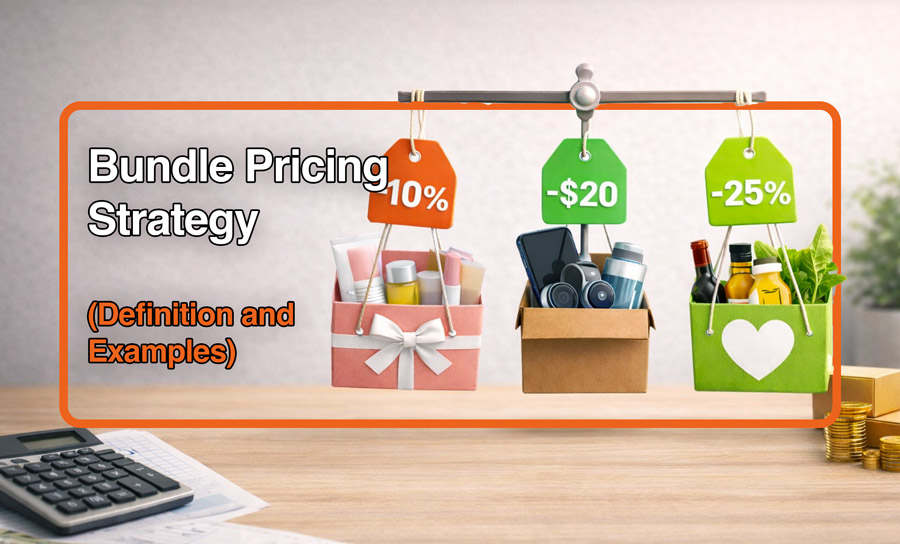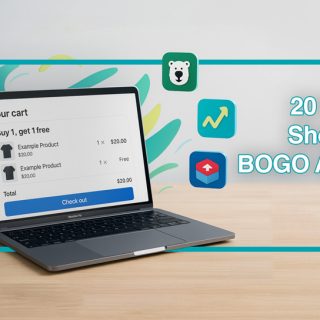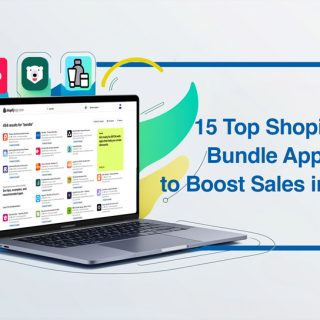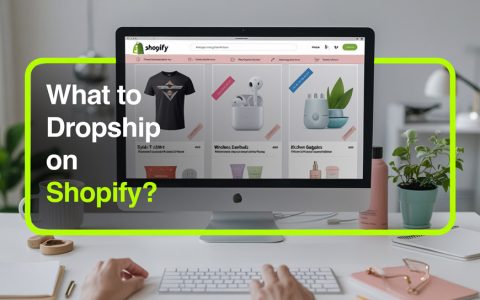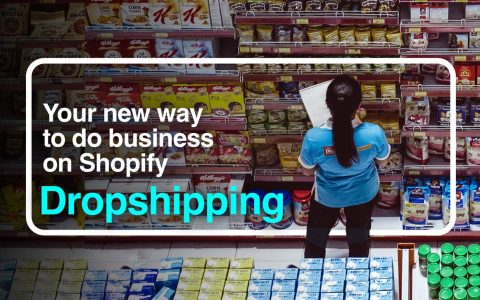Almost every business today leverages bundle pricing, from local grocery stores offering deals to global skincare brands using bundles for marketing. The key to a successful bundle is setting the right price—one that benefits you as a seller and attracts customers. A well-crafted bundle appeals to those seeking discounts for various reasons, whether for savings, bulk buying, or grabbing a good deal. A strategic bundle pricing approach can significantly impact your business’s success, especially in e-commerce. Let’s dive into how bundle pricing can benefit your business and explore some real-world examples.
📌 Key Takeaways:
- Bundle pricing is a strategy where multiple products or services are sold together at a discounted price, creating a perceived higher value for customers while boosting sales for businesses.
- This approach not only attracts customers but also encourages them to buy more, helping with inventory management by pairing less popular items with best-sellers.
- A well-executed bundle pricing strategy enhances customer satisfaction, drives loyalty, and increases repeat purchases, ultimately contributing to higher profitability.
- Regular monitoring and adjustment of prices based on sales data and customer feedback are crucial to keeping bundles appealing and competitive.
What is bundle pricing?
Bundle pricing determines your sales strategy, at least that part of sales that’s related to bundled categories. You might have heard this concept as “price bundling,” too. This approach aims to enhance value perception among customers, encouraging them to purchase a package rather than individual items.
This strategy appeals to consumers who perceive they are getting more for their money, while businesses benefit from higher overall sales and customer retention. That’s why most bundles are considered bargains; they’re just efficient to buy.
“The bundle pricing definition refers to a marketing and sales strategy where multiple products or services are sold together at a single, often reduced, price, offering added value to customers through discounts.”
Why do companies adopt product bundle pricing?
Imagine you’re at a coffee shop, eyeing your usual latte. Then you spot a breakfast combo—latte, croissant, and juice—for just a little more. Feels like a win, right? That’s bundle pricing at work! Companies use it for smart, strategic reasons:
Boosts Sales Volume:
Bundling encourages customers to spend more by offering more for slightly less. Instead of just buying one item, shoppers feel good about getting a “deal,” which increases the average order value without making it feel like a splurge.
Increases Perceived Value:
People love a bargain, even more when it feels exclusive. Bundles make customers feel like they’re getting premium value at a reduced price, which builds trust and satisfaction, turning one-time buyers into loyal fans.
Moves Inventory Strategically:
Got a slower-selling item gathering dust? Pair it with a bestseller! Bundling helps clear inventory that might otherwise go unnoticed, making room for new stock while still keeping customers happy.
Simplifies Decision Making:
Too many choices can overwhelm customers. A thoughtfully curated bundle helps simplify the shopping experience, guiding customers toward a complete solution without the hassle of choosing every item separately.
How can bundle pricing help your ecommerce business?
Bundle pricing can be a game-changer for your business, of course, if you use it correctly. By offering multiple products or services together at a lower price, you create irresistible deals that attract more customers, even the people who didn’t intend to make the purchase in the first place. This product bundling pricing strategy not only enhances the value of your offerings but also encourages customers to buy more, thereby boosting your overall sales.
One of the major bundle pricing advantages is the ability to increase customer satisfaction. Users tend to buy from stores that present better options (like bundles). Then, they become repeat buyers and recommend your business to friends and family. A good price can also help clear out less popular items by pairing them with best-sellers, effectively managing your inventory and reducing storage costs.
Furthermore, efficient price bundling can give your business a competitive edge. By adopting a bundle pricing strategy, you can drive customer loyalty, streamline inventory, and ultimately boost your profitability.
Related article
Tips for Implementing Good Pricing Strategies
Since bundle pricing can make a huge difference in your ecommerce or brick-and-mortar business, it’s always beneficial to know some tips.
1. Provide Optional Discounts
Many people buy the needed products in bundles only to take advantage of the discounts and promotional offers. Offer optional bundling to let them choose additional products “at a discounted rate.” This flexibility is fun and can increase customer loyalty and boost revenue by appealing to those who seek added convenience and value.
2. Focus on Revenue Allocation Goals
Align your pricing strategy with revenue allocation goals. Effective pricing can encourage higher spending, improving revenue without necessarily increasing the customer base. Money-making in a business needs plans, experts, and, of course, time. You might even need to hire new roles for your business, but it’s all going to be worth it.
3. Highlight Bundle Advantages
It’s always a good idea to clearly communicate the advantages of purchasing bundles. In your marketing efforts, informative emails, web banners, or even social media, emphasize cost savings, convenience, and complementary product benefits (and actually price the bundle in a way that helps users save). Educate your buyers on the value proposition and make bundles more attractive, driving sales and enhancing perceived value.
4. Use Mixed Bundling
Mixed Bundling means any type of bundling that can be changed or customized by customers (as opposed to pure or fixed bundling). This means the price can be customizable too. Like in “Buy One Get One” bundles, the customer knows that if they buy another item, it’ll be free or include a great discount. This option will instantly attract customers who are looking for a good deal.
5. Monitor and Adjust Prices Regularly
Today’s good pricing, might not work for the next week. Sometimes things change daily, and that’s why you need to constantly keep an eye on your bundles and prices. Regularly review and adjust your bundles based on sales data and user feedback. This ensures that your bundles remain relevant and attractive, allowing you to optimize revenue and maintain customer interest in the long term.
6. Analyze your performance
After implementing your product bundling strategy, it’s time to have regular check-ups and tests to see how it works, and what strategy might be better. Conduct A/B testing to analyze different bundling strategies. This helps identify the most effective approaches, enabling you to refine your pricing strategy for maximum revenue and customer satisfaction. Data and analysis tools can help you a lot here.
Want a deep dive into product bundling?

Introducing Fast Bundle: Your Shopify Bundling and Discount Solution
Looking to master bundle pricing and boost your business like never before? Meet Fast Bundle, the ultimate Shopify app designed to transform your bundling strategy. Fast Bundle offers four versatile types of bundles, each crafted to maximize discounts and drive sales. Whether you’re looking to create simple product bundles or intricately mixed bundles, Fast Bundle has you covered.
Our app doesn’t just stop at bundling; it provides powerful pricing tools to design the best possible discounts, making your offers irresistible to customers. Here are the types of bundles you can make in Fast Bundle:
- Simple (fixed)
- Buy One Get One
- Mix & Match
- Volume discount
By leveraging these smart bundles and discounts, you can enhance perceived value, increase average order value, and ultimately boost your benefit. Ready to see the impact of expertly priced bundles on your business? Explore Fast Bundle and discover how our app can help you design and implement winning bundle strategies. Install Fast Bundle for your Shopify store, and ask any questions from our 24/7 support team.
4 Bundle Pricing Examples
To fully understand how price bundling helps businesses, we have gathered 4 well-known and effective implementations of strategy in this field. Here are some bundle pricing examples of both online and physical brands, that sell products and services in the form of bundles:
1. McDonald’s Value Meals
This brand is known worldwide for its bundles. What better to include in a bundle than a delicious sandwich and a refreshing drink? McDonald’s introduced Value Meals to offer a burger, fries, and a drink at a discounted price.
For example, a Big Mac Value Meal might be priced at $7, compared to buying each item separately for around $9. This product bundle pricing strategy started in the 1990s and has become a big part of their marketing.
By providing a perceived higher value, McDonald’s attracted more customers, increased sales, and streamlined their ordering process, making it easier for customers to choose a meal. Now, instead of calculating in your head and deciding about your meal, you’l just order a Value meal in seconds, ensuring you’ll be making a good deal.
2. Adobe Creative Cloud
The famous PC tool Adobe transitioned from selling individual software licenses to offering the “Creative Cloud bundle”, a package including Photoshop, Illustrator, Premiere Pro, and more. The Creative Cloud subscription is priced at $52.99 per month, compared to purchasing each software individually, which could cost over $2,000 upfront. The choice is clear, right?
Many people who work with computers use many of these tools together, and it makes sense to buy a package that is more efficient and includes all of them.
Launched in 2013, this example of price bundling boosted Adobe’s revenue through recurring subscriptions, attracted a wider user base, and reduced piracy by offering a more affordable, comprehensive solution.
3. Amazon Prime
When you use the Amazon Prime bundle, you’ll probably gather all your home and personal purchases in one place (Amazon Platform) to benefit from the free shipping. That’s one of the best bundle pricing examples in a nutshell.
Amazon Prime bundles free shipping, streaming services, and other benefits into one annual subscription for $139 or a monthly subscription for $14.99. Needless to say, services like Amazon Prime Video and free two-day shipping would cost significantly more.
Introduced in 2005, Prime initially focused on free shipping but quickly expanded to include video, music, and other perks. This product bundle pricing strategy increased customer loyalty, encouraged more frequent purchases, and significantly boosted Amazon’s revenue by making Prime membership an essential part of many shoppers’ lives.
4. Comcast Xfinity Packages
Comcast Xfinity is an internet and smart home company that offers services like high-speed internet, cable TV, streaming, etc. This company offers bundled packages combining internet, TV, and phone services (and other perks) that are considered great price bundling examples.
For example, a Triple Play package might be priced at $89.99 per month, compared to purchasing each service separately for around $120. These bundles, often marketed with a discounted rate compared to purchasing each service separately, have been a major part of Comcast’s strategy for years.
By bundling services, Comcast has been able to increase customer retention, simplify billing, and enhance perceived value, which has helped them maintain a strong customer base and steady revenue growth.
Bundle pricing advantages and disadvantages
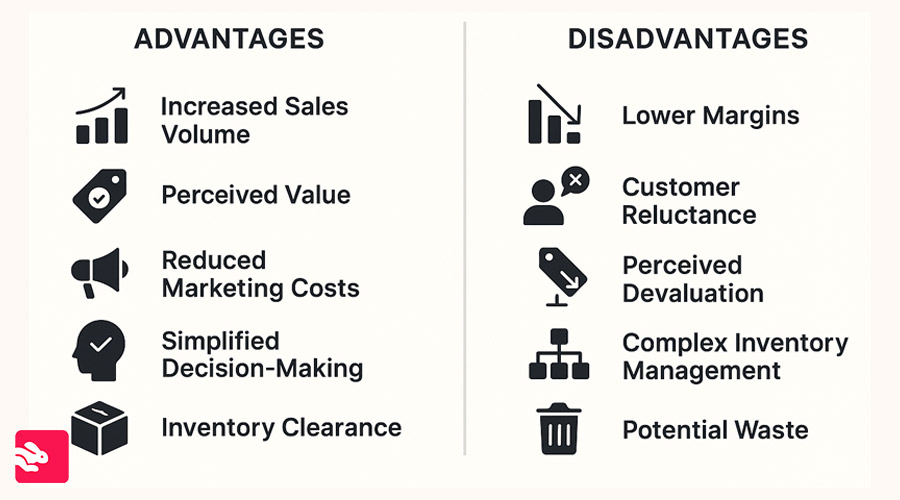
A product bundle pricing strategy will undoubtedly drive sales for you, but you’ll need to approach it with realistic expectations. Here are some pros and cons for this strategy:
Advantages:
- Increased Sales Volume: Encourages customers to buy more items at once, boosting overall sales.
- Perceived Value: Offers customers the feeling of getting more for their money, enhancing satisfaction.
- Reduced Marketing Costs: Promotes multiple products in a single offering, reducing marketing expenses.
- Simplified Decision-Making: Makes it easier for customers to choose, reducing decision fatigue.
- Inventory Clearance: Helps clear out slow-moving or excess stock by bundling it with popular products.
Disadvantages:
- Lower Margins: Offering discounts can reduce profit margins per item sold.
- Customer Reluctance: Some customers may avoid bundles if they don’t need all items, causing lost sales.
- Perceived Devaluation: Frequent bundling can reduce the perceived value of individual products.
- Complex Inventory Management: Managing stock levels for bundled items can become complicated.
- Potential Waste: Customers may receive unwanted items in bundles, leading to dissatisfaction.
How to Price Bundle Deals: A Step-by-Step Guide
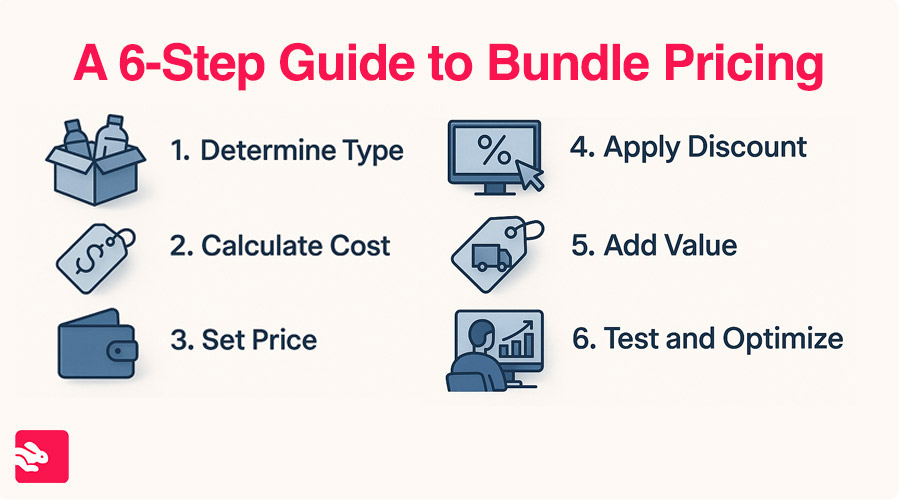
Whether you’re selling on Shopify or another platform, pricing your bundles effectively can help drive more purchases and keep your customers coming back for more. A good price is one that benefits you and your customers at the same time, and that’s what we’ve provided a step-by-step guide here for.
Step 1: Determine the Type of Bundle
Pre-set Bundles: Choose specific products to bundle together, for example, a skincare kit that includes a cleanser, toner, and moisturizer.
Customizable Bundles: Let customers pick products to create their bundle (e.g., choose 3 items from a selection of 5).
Tiered Bundles: Offer different bundles at different price points. Example: Basic bundle for $30, Premium bundle for $50.
Add-on Bundles: Allow customers to add an extra product at a discounted price when they buy something else. Example: “Add a matching wallet for just $10.”
Step 2: Calculate the Cost of Each Product
Base Price: Calculate the full price of each product in the bundle. Example: A t-shirt costs $20, a cap costs $15.
Cost of Goods Sold (COGS): Factor in the cost of shipping and any additional handling costs. Example: $2 shipping per item, $1 packaging cost.
Profit Margin: Ensure that after applying a discount, you’re still achieving a healthy profit margin. Example: If the t-shirt and cap have a combined base price of $35, ensure the bundled price allows for a decent markup.
Step 3: Set a Price for the Bundle
Discounted Bundles: Offer a set discount for the bundle compared to individual product prices.
Tiered Bundles: Price the bundles based on their value and the number of items in them. Example: Basic bundle (1 item): $20; Premium bundle (3 items): $50.
Add-on Pricing: Offer additional products at a much lower price. Example: Offer the matching wallet at $10, instead of its usual price of $25.
Use Shopify Apps for Dynamic Pricing: Use Shopify apps like Fast Bundle, PickyStory, or Bold Bundles to automate pricing based on your preferred strategy.
Step 4: Apply Discount and Bundle Settings on Shopify
Use Shopify’s Built-in Discounts: Create discount codes for the bundles in the Shopify admin.
Go to Discounts > Create Discount, choose a percentage or fixed amount, and apply it to the bundle products.
Bundle Apps on Shopify:
Install apps to create a smooth shopping experience and easily manage bundles with automatic pricing adjustments at checkout.
Step 5: Add Value to the Bundle
Incentives for Larger Bundles: Add more value to the larger bundles to encourage customers to purchase bigger sets. Example: “The $50 bundle is 25% off, but the $80 bundle is 40% off and includes a free gift!”
Include Exclusive Content: Offer exclusive items or limited-edition products in your bundles. Example: A limited-edition flavor or design.
Free Shipping: Consider offering free shipping for bundles to add additional value. Example: “Get free shipping when you buy a bundle worth $50 or more.”
Step 6: Test and Optimize Pricing
A/B Testing: Run A/B tests to compare the effectiveness of different bundle pricing strategies. For example, try a fixed discount vs. a tiered pricing structure. Example: Create two bundle versions: one with a 15% discount, and the other with a “Buy 2, get 1 free” deal.
Analyze Results: Monitor your sales data to see which bundles are performing the best. Use Shopify Analytics to track customer engagement, conversions, and average order value.
Adjust Pricing: After testing, adjust your bundle prices based on what customers find most appealing.
Final Thoughts
Want your bundles to instantly appeal to the customers and give you the win in the competition? Pay more attention to price bundling! Make it hard to miss, and remember that effective bundle pricing can also simplify the buying process, making it more convenient for customers. It is a versatile tactic that can be used in various industries, from software and telecommunications to retail and hospitality.
So no matter what line of work you’re in, use the tips in the article to enhance sales and boost your business!
FAQ
Products that complement each other or are frequently bought together (like electronics and accessories or skincare sets) tend to perform well in bundle pricing strategies.
They should analyze the cost of each product, customer demand, and competitor pricing to find a balance that encourages purchases without cutting into profits too much.
Yes, bundle pricing works for services, too. Combining related services (e.g., a consultation plus follow-up support) can increase perceived value and encourage clients to commit to more comprehensive packages.
Product bundle pricing encourages customers to purchase more items by offering a perceived deal, often leading them to buy products they may not have originally considered. This can increase the average transaction size and increase brand loyalty.
Bundle pricing offers multiple products as a discounted package, boosting perceived value, encouraging larger purchases, simplifying decisions, aiding inventory management, and sometimes featuring a key product sold separately for flexibility.
